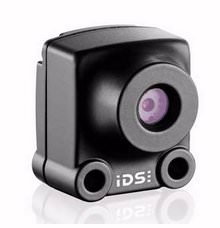
Video and camera technology is used in a wide range of vending machines from food and beverage-type dispensers to ticketing kiosks and ATMs. Applications range from video security to prevent damage and theft, to uses of cameras as an intrinsic part of the transaction, such as reading barcodes or QR codes for access control.
Newer applications or in development include using video for marketing and to boost sales and biometrics for enhanced security. Facial recognition has an important role to play in both current and future applications.
Cameras in surveillance applications
Surveillance cameras are used extensively in any areas where property is to be protected, but there is a growing use of camera technology actually inside vending machines and ATMs.
For vending machines, this is largely to protect against vandalism when people shake, kick or open the door to the machine to steal the contents and cash.
Indeed, there have been instances of people arrested for vending machine vandalism as the result of video recorded from an internal security camera.
Cameras installed in ATMs can provide clear and detailed images of the people involved in transactions, with video footage linked to individual transactions.
Appropriate selection of lenses and field of view will allow the area surrounding the cash machine to be monitored as well.
Clear imaging of the faces of the people involved in transactions is crucial in identifying potential hackers or those trying to force others into giving them the money they have withdrawn from the ATM.
Cameras intrinsic to machine operation
In addition to surveillance functions, there are several applications in which camera technology is used as an intrinsic part of the machine.
One major example is in the field of e-ticketing; here, customers ordering tickets to events receive an e-ticket containing a barcode or QR code to their computers, mobile phones or tablets.
This is then used for access to the event via an access control unit like an automated turnstile.
This requires the turnstile to be able to optically read the code. This can be printed out in advance and a paper version presented to the reader, or in some cases, the code can be read directly from the screen of the mobile device.
Either way, camera technology within the unit is used to read the code, although barcodes can have some limitations and some manufacturers have introduced their own codes.
This technology is being developed for new ATMs, too, with an added layer of biometric security such as facial recognition.
Indeed there are suggestions that facial recognition software could be incorporated into more general point-of-sale equipment.
Cameras for marketing applications
Camera technology can also be used in “smart” vending machines to boost sales. A new type of drink dispenser recently introduced in Japan uses facial recognition to identify consumers by gender and age and then shows images of “recommended” drinks on a screen.
These recommendations will be based not only on the demographics of the customers but also according to the time of the day and the temperature.
Camera technology
The image quality produced by cameras used in vending machines, ATMs and kiosks is very important and is dependent on a number of factors, including:
• Adequate field of view to make sure that the required image can be captured
• Sufficient resolution to get sharp images
• Good dynamic range to allow for a variety of external lighting conditions
• Use with specialist software such as facial recognition and code reading
The most commonly used systems used in vending machines are webcams or IP-cameras. However, the use of cameras more common in machine vision or industrial vision applications provides an interesting alternative.
Source: vendingtimes.com
